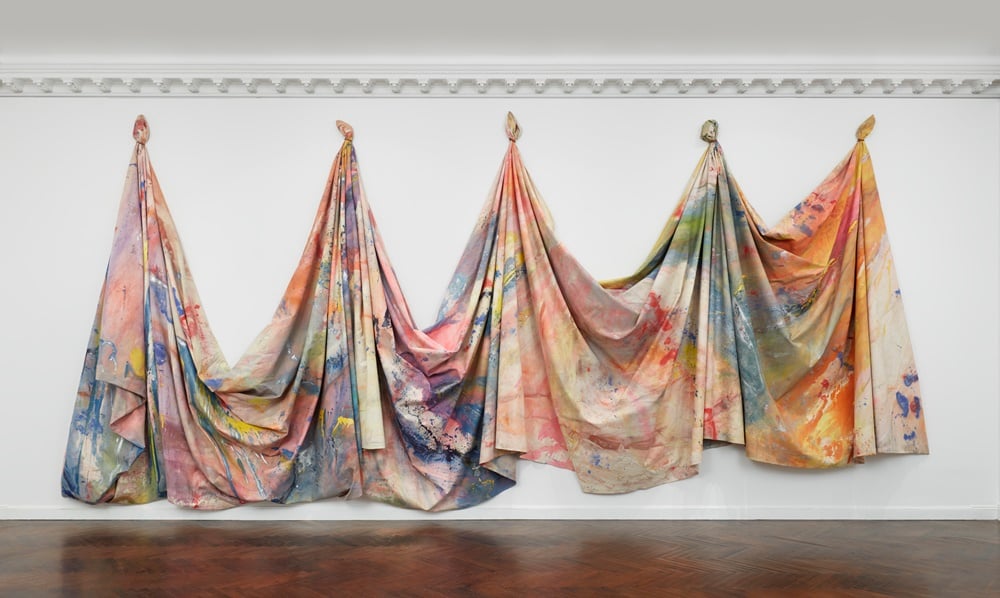
Given that esteemed Color Field painter Sam Gilliam’s career spans more than six decades and his work was first acquired by the Metropolitan Museum of Art in 1979, it’s surprising that he has never been represented by a New York gallery. But now, with recognition and demand for his work at an all-time high, the artist is joining mega-gallery Pace, which is headquartered in New York with locations worldwide.
Gilliam will continue to work with Los Angeles-based gallery David Kordansky, which has represented him since 2013. The artist also had a major exhibition with Mnuchin Gallery in New York in 2017.
Gilliam first garnered attention in the mid-1960s for his beveled-edge and drape paintings, which sought to push the boundaries of what a painting could be. He was the first African American artist to represent the United States at the Venice Biennale in 1972.
He is one of a number of painters active in the ’60s and ’70s who were celebrated when they emerged, but receded from view in the ensuing decades due to a mix of factors, including his race and the fact that he worked in Washington, DC, outside of a major art-market hub.
In recent years, however, the art world has appeared to wake up and take notice of Gilliam’s importance. In 2017, Gilliam returned to the Venice Biennale with a vibrant, unstretched canvas Yves Klein Blue (2017), which welcomed visitors to Giardini’s main pavilion. In 2018, he was the subject of a major retrospective at the Kunstmuseum Basel.
But the Gilliam renaissance appears to be just beginning. Next month, the Dia Art Foundation in Beacon, New York, launches a long-term display of the artist’s early work from the ’60s and ’70s, putting him in the context of his minimalist and post-minimalist contemporaries, such as Robert Ryman and Mary Corse. Gilliam’s new works on paper are also on view now in a solo exhibition on at the FLAG Art Foundation in Chelsea.
In a statement, Pace Gallery founder Arne Glimcher called Gilliam “a radical and influential artist” who, by “inventing the path by which the canvas was freed of its support… transformed the possibilities of picture-making internationally.”
Gilliam’s auction record was broken three times in 2018—a powerful indicator of the rising demand for his work. Over the course of last year, his top price more than doubled. The current record of $2.2 million was set at Christie’s New York for Lady Day II (1971) in November. Five months prior, a 1967 canvas, FORTH, sold for $1.2 million at Sotheby’s London. That March, a 1968 painting had sold for $885,000 at Sotheby’s New York.